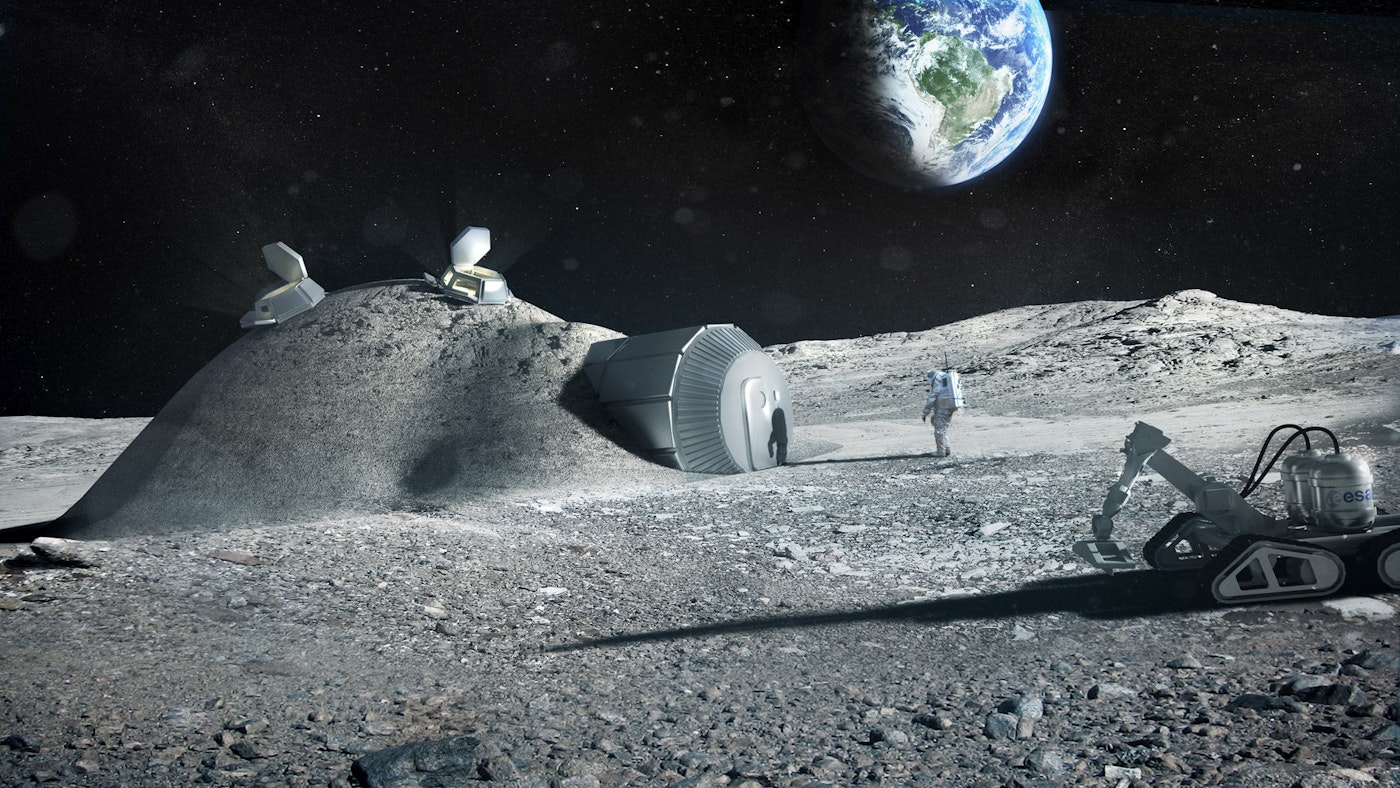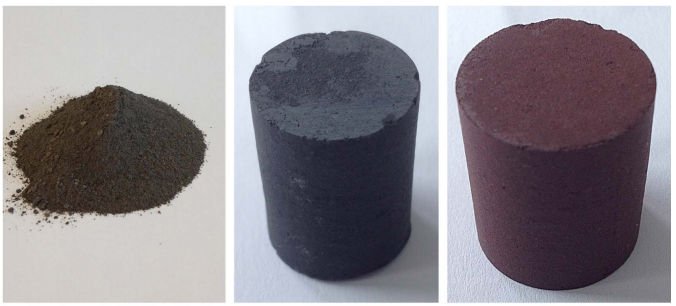Project Image - "Lunar base made with 3D printing" (ESA/Foster + Partners, 2013)
WHO AM I?
I'm Summer - a 3rd year MEng Aerospace Engineering, Astronautics and Space Technology student at Kingston University! One of my biggest passions is human spaceflight – something which I would like to thank the Apollo program for! I have a huge interest in our future lunar activities as a human species, and how we could develop the processes to sustain a prolonged presence in deep space.
PROJECT SUMMARY
For my third year dissertation, I am investigating the viability of using lunar material for the construction of lunar structures in-situ - In-Situ Resource Utilisation (ISRU) is the process of extracting raw materials in space and processing them into critical components.
To do this, I will be manufacturing test samples of simulated lunar regolith (simulant) via sintering - essentially this process is akin to baking moon cookies. The samples' physical and mechanical properties will be established via testing, and quantitative, as well as qualitative data collected. This data will be compared against space-proven materials, as well as compared against the requirements of a lunar structure design simulated using CAD and FEA.
The goal is to ascertain the material’s inherent suitability for lunar construction. I will also be exploring how this technology can be translated for complete implementation in space.
This project will encompass the design and manufacture of simulant samples, the design, analysis and manufacture of a pressing die to aid the sample manufacture process, and the physical and mechanical testing of the completed samples.
Why is this project unique?
As the human presence in space expands, the need for permanent supporting in-space infrastructure increases. Transporting supplies and materials from Earth to build this infrastructure would be expensive, and wasteful of payload mass. Therefore, it is imperative to the long-term sustainability of deep-space exploration to be “Earth Independent”.
The complete implementation of ISRU would facilitate this goal in evolving from “Earth-Reliance” This process would significantly reduce mission mass – thus increasing the mass available for scientific payloads – reduce mission costs, as well as reducing the risk of human exploration.
The Artemis program signals humanity’s return to the Moon. To sustain long-term visits, an area in which ISRU must be demonstrated is the extraction and processing of raw lunar regolith so that appropriate habitational elements can be built on the lunar surface to protect manned missions from the hazards of the lunar environment. These elements could include structures such as landing pads and shelters.
In response to Space Policy Directive 1, NASA has committed itself to the further development of these technologies and processes to utilise space-based resources for deep-space exploration.
This project will explore this technology and assess the viability of harvesting and using lunar regolith as a construction material for applications on the Moon.
I hope to contribute to the field and build off the work of those who have explored these concepts before me.
Where will the money go?
If I hit the minimum target, the funding will be spent on the purchase of a large amount of lunar simulant. The larger the amount – the larger the material database I can create with my research. The different samples I can produce will be tested using different facilities to broaden the spectrum of data that I will be collecting. 10% of the minimum target will be used to produce the art-based rewards I am offering.
Should I exceed my minimum target, the money will be spent helping to facilitate the development of the necessary infrastructure to help expand KU’s capability in this field. This could entail high-precision dies, the collection of an assortment of lunar simulants for other types of research as well as the up-scaling of the processing and fabrication system.
Rewards
Have a look at the rewards that are on offer for contributing to my project!
If funding is successful, please expect the tangible rewards in the summer of 2020. This will give me time to complete my research and sort out all the extra bits. This includes the art-based rewards as well as copies of my dissertation. Access to the behind-the-scenes blog will be given as soon as the campaign is over via a link!
Images and video
 (ESA/Foster + Partners, 2013)
(ESA/Foster + Partners, 2013)
Above is a concept design from ESA and Foster + Partners that I hope that my research could contribute towards facilitating!
 (Exolith Labs, 2020)
(Exolith Labs, 2020)
Above is an image of raw lunar simulant.
(Meurisse et al, 2017)
Above is lunar simulant powder raw and then sintered in a vacuum and air from a study by Meurisse et al in 2017.
Help this project succeed!
Any and all contribution is much appreciated however, if you feel that you cannot contribute financially, sharing this project to your circles is more than enough. I cannot thank you enough for taking the time to read through and consider this project and I can't wait to show you all what becomes of this research.
Thank you again!
Summer

